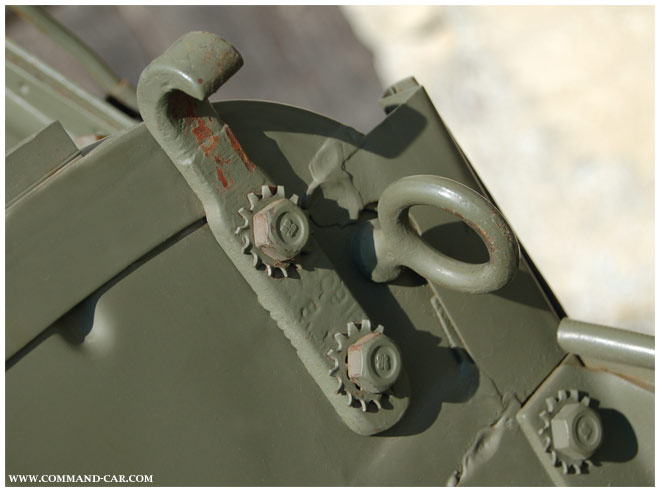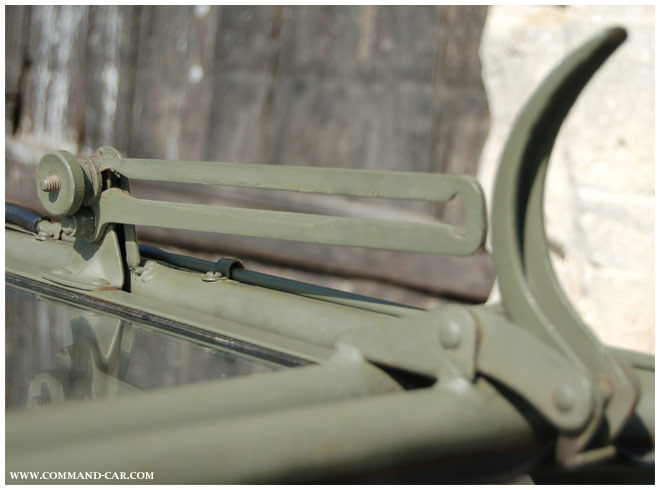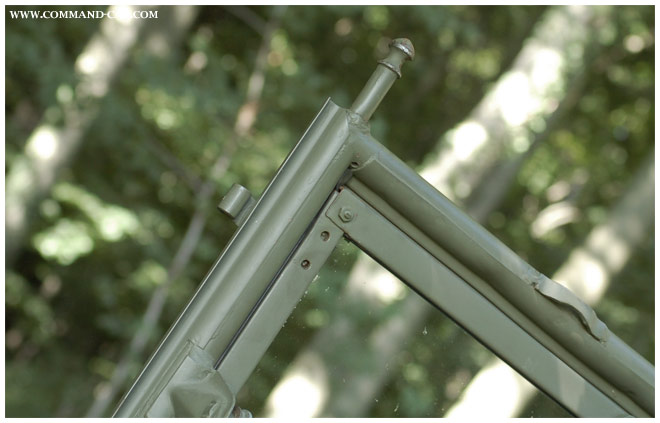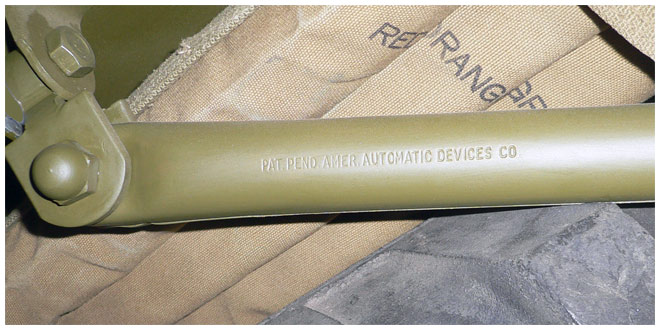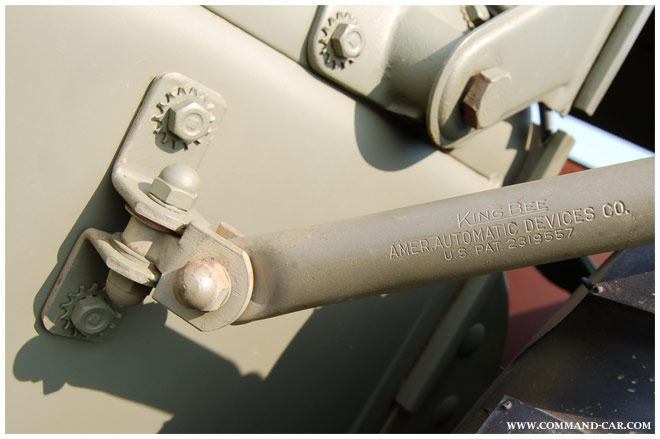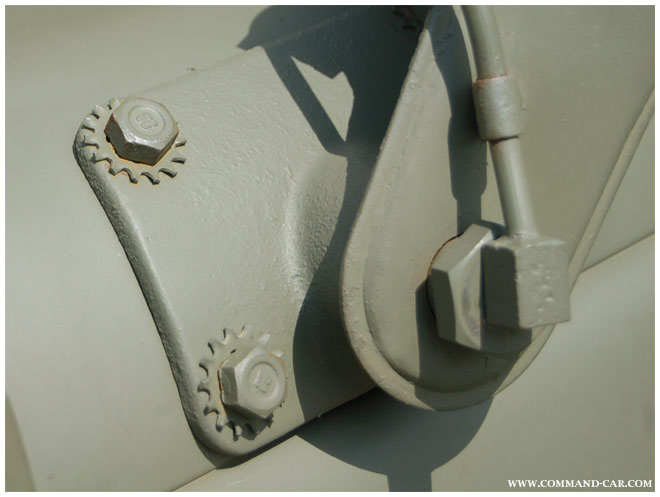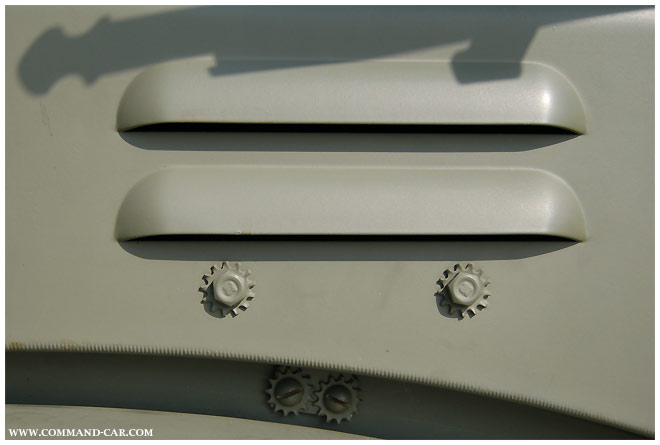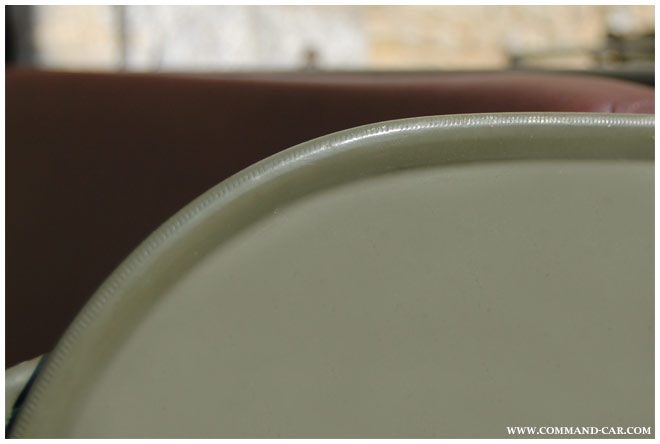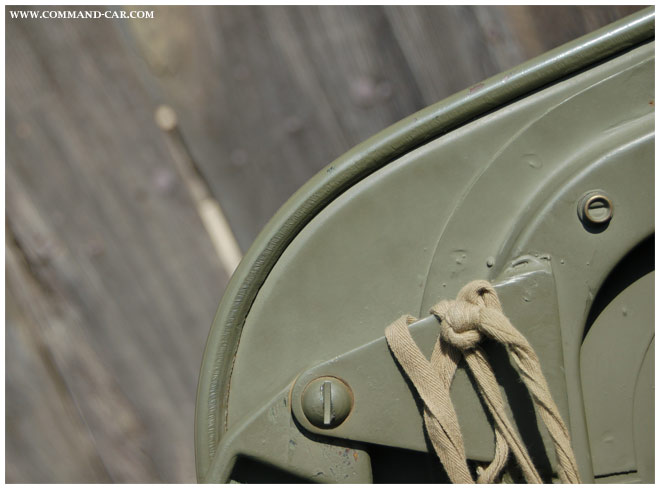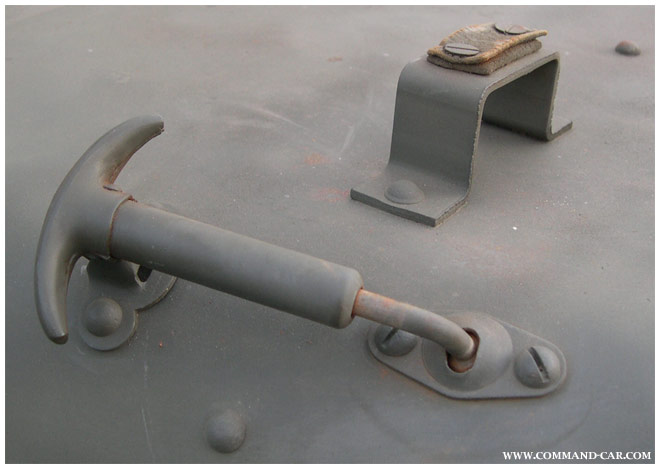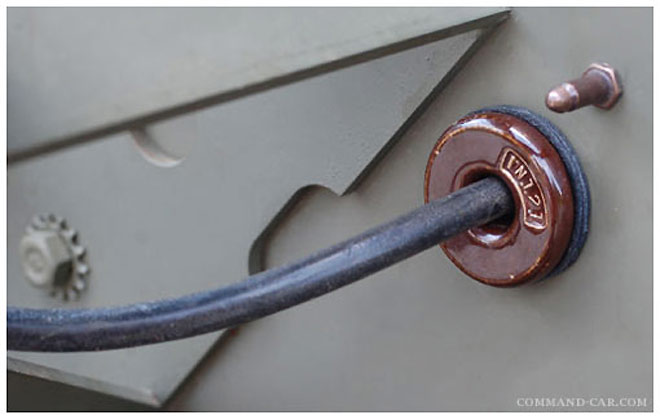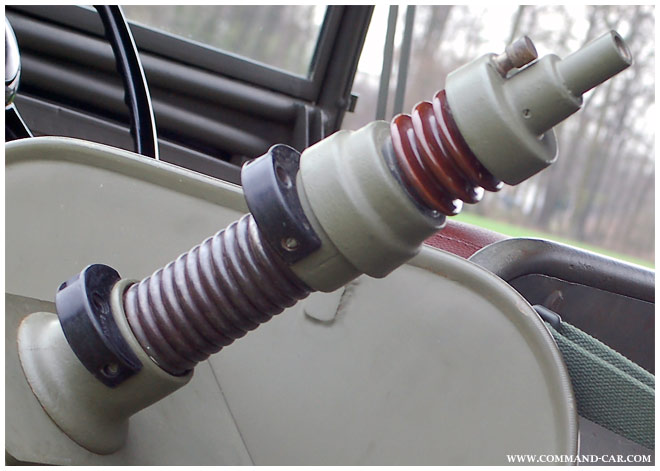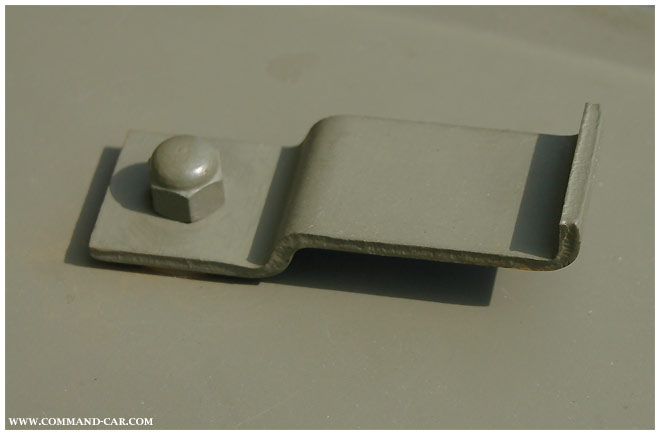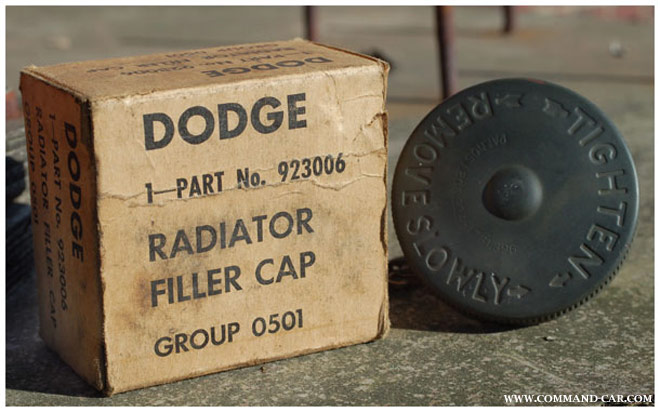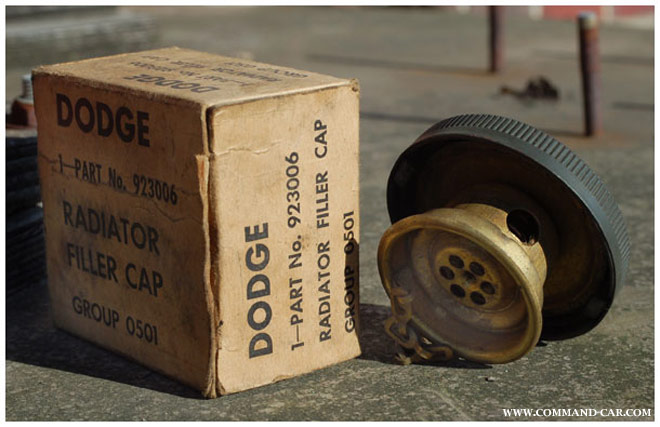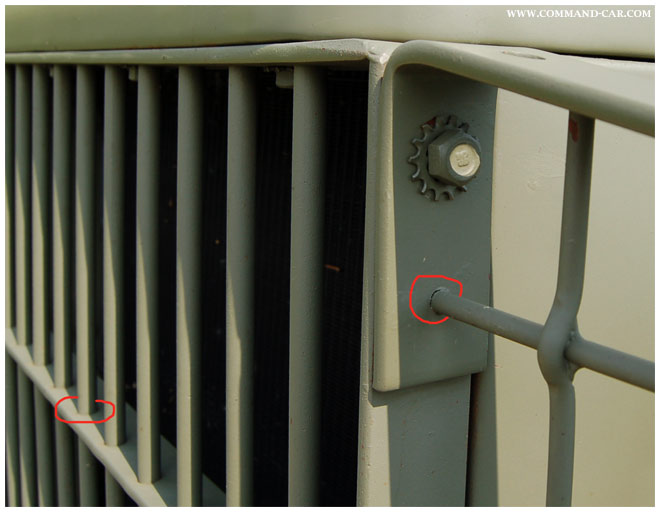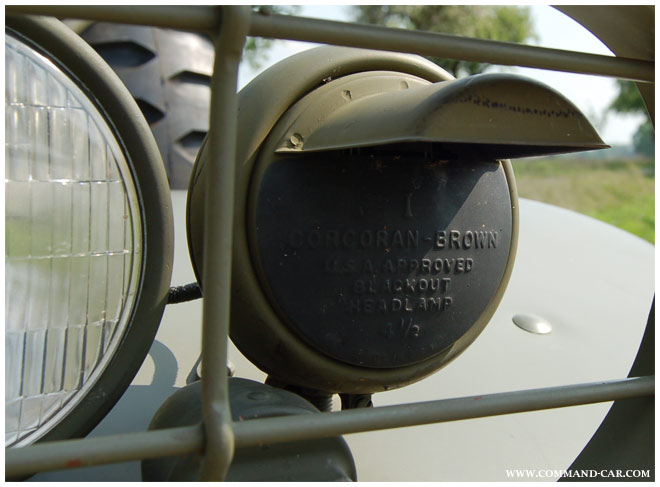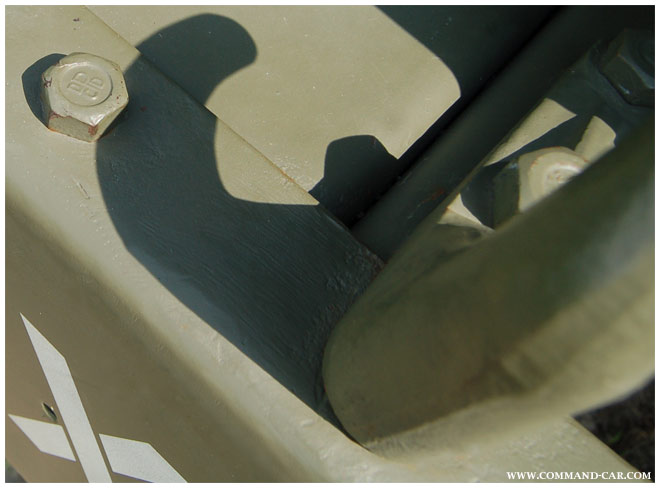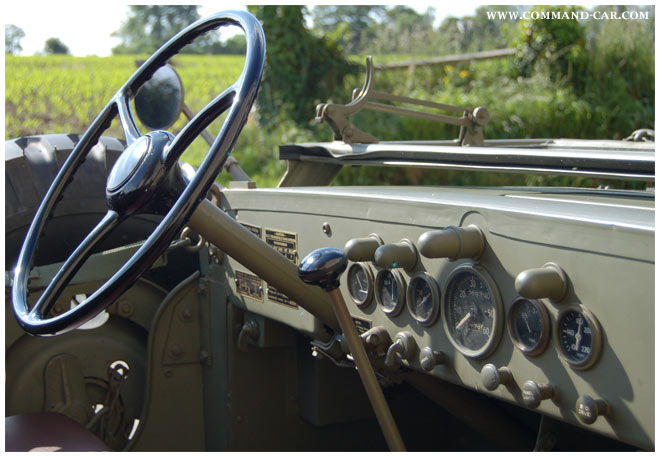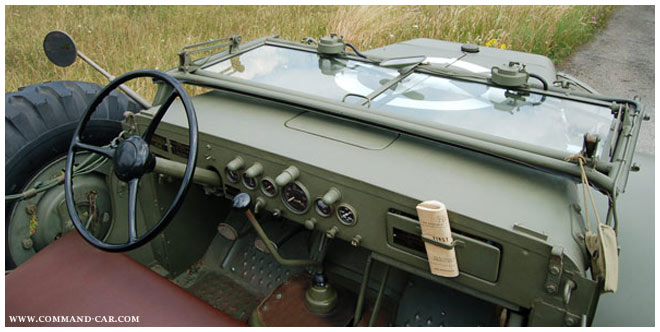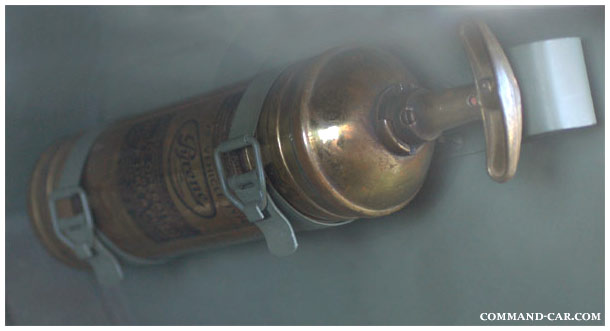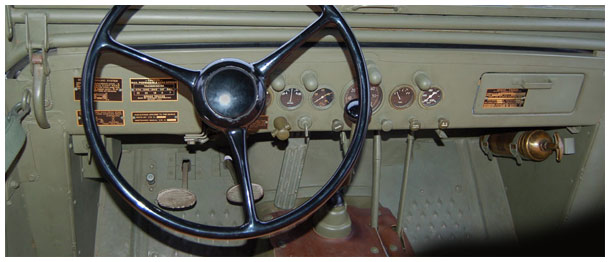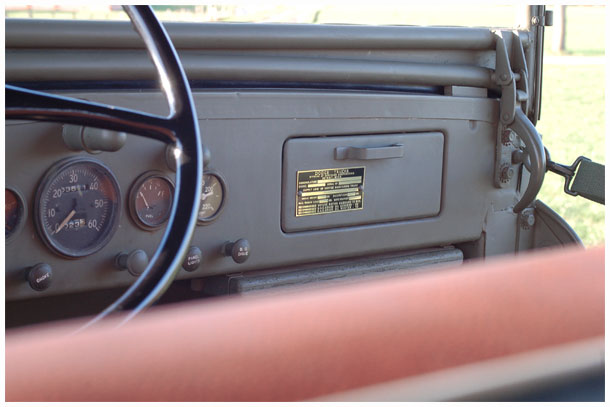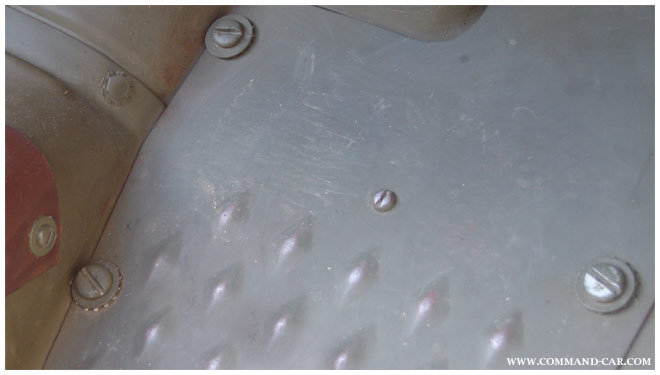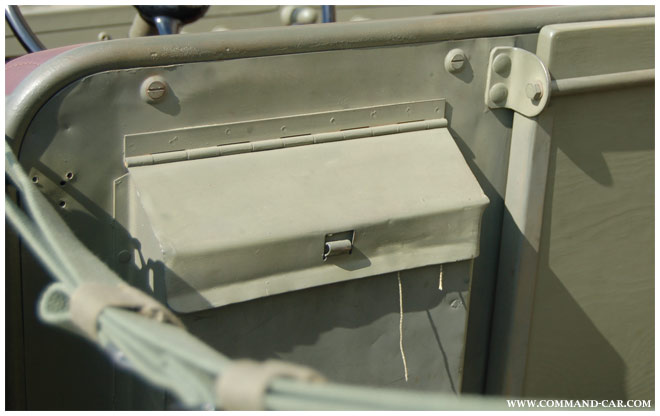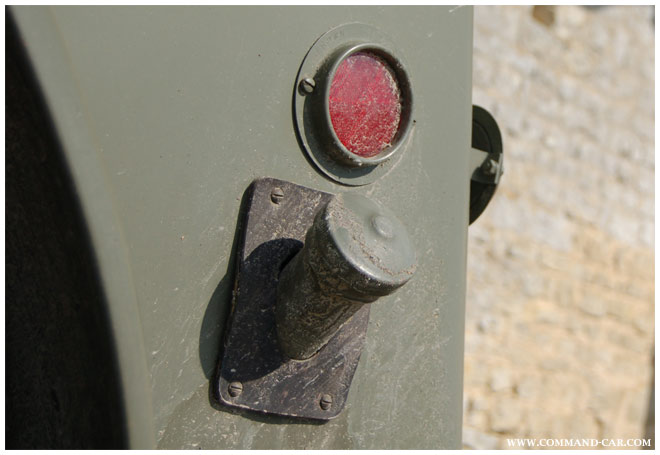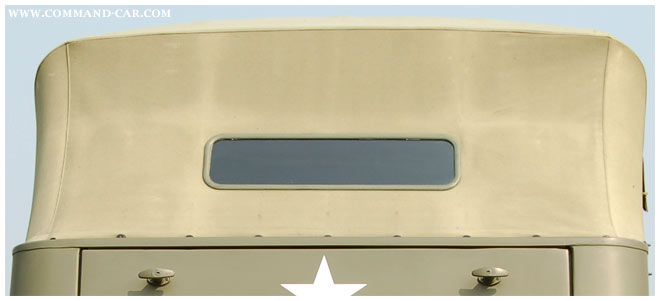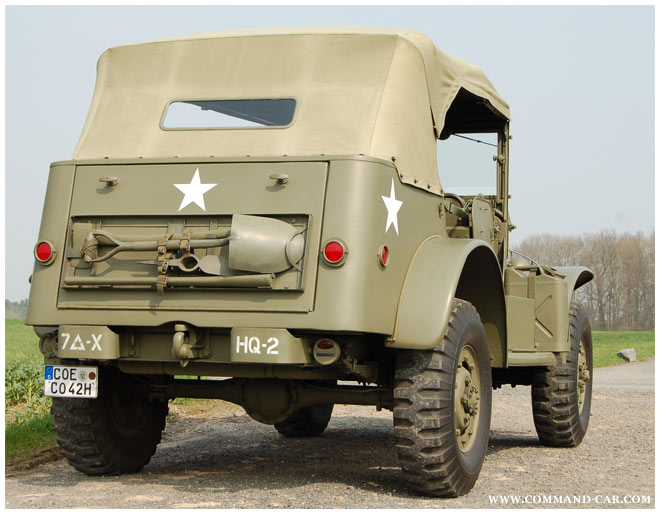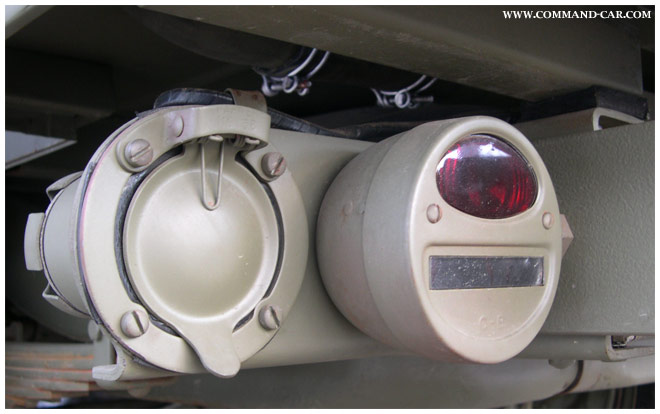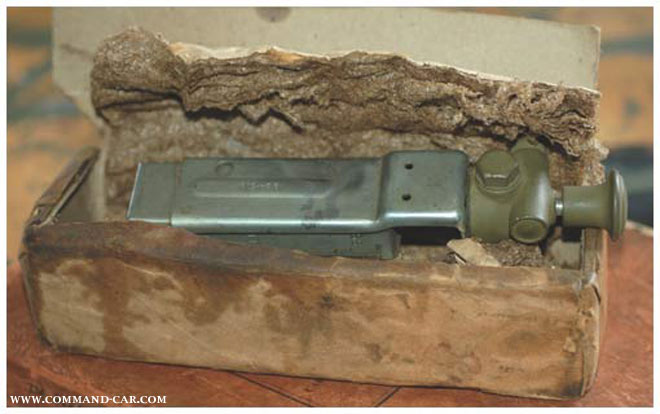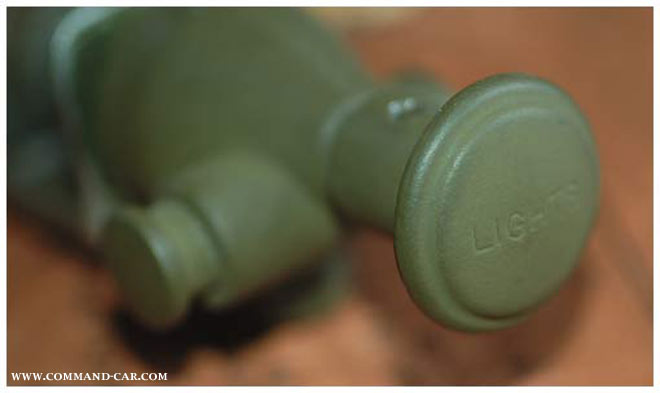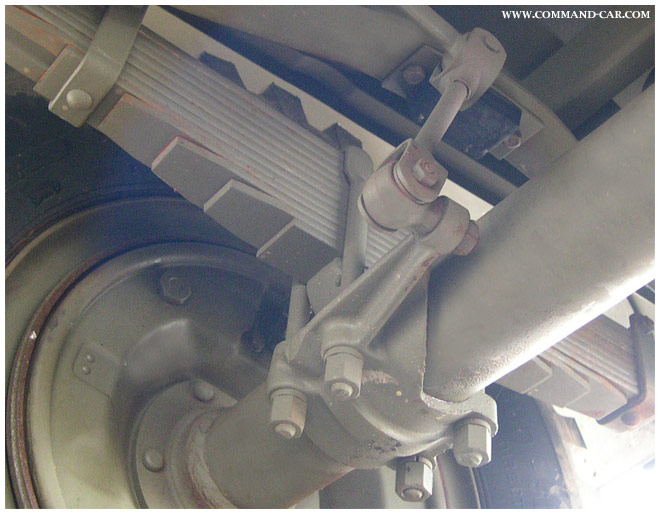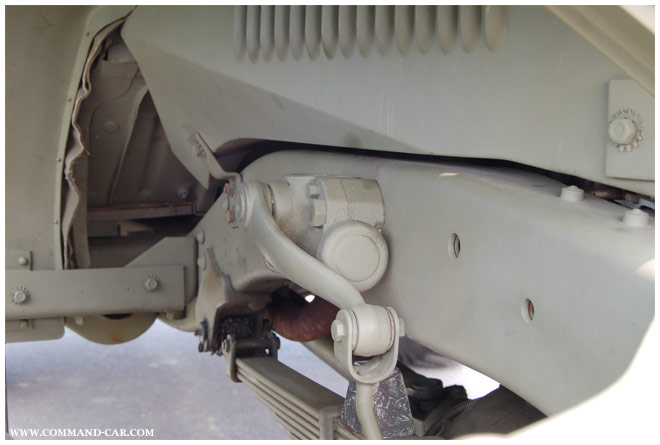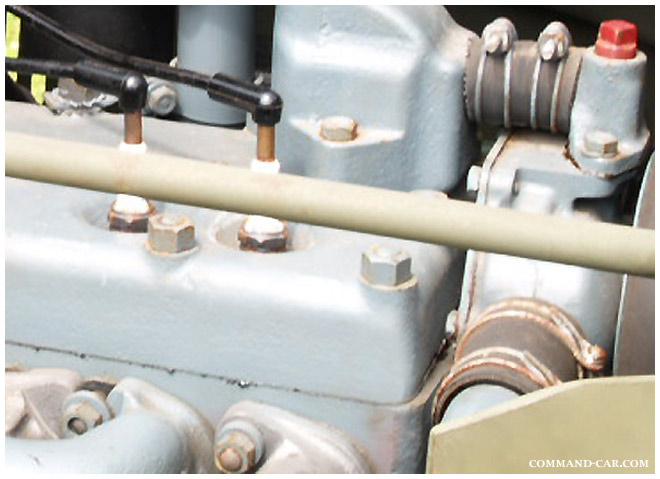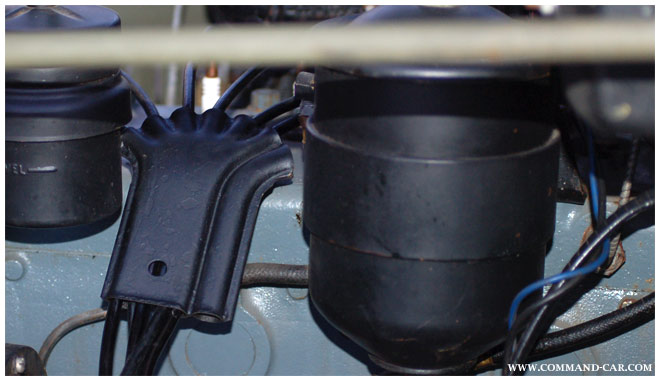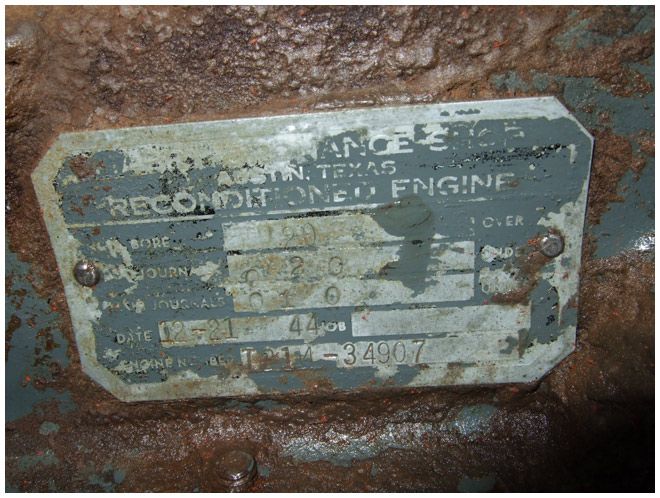|
Details for the 3/4 ton Dodge Command Car 1942/43 |
|
| All pictures are taken from VIN 81546650 which has left the factory in July 1942. |
| Exessive research on historic photos and unrestored CCs was done on these |
| details to make sure they are correct for a July 1942 Command Car. |
| So this reference is mainly for the earlier CCs. |
| However, further information or corrections are welcome to make this page as |
| accurate as possible. |
| |
|
| The windshield locking hook. |
| This early style is smaller than the later ones. |
|
| Screw to open the inner window frame. |
| This is the early version, the later ones have a wavy edge, resembling a flower. |
| Also visible the second part of the windshield locking mechanism. |
|
| Detail of the Command Car windshield pinnacles. |
|
| First version mirror arm with Patent Pending. |
| Before May 1943. |
| Pat. Pend. Amer. Automatic Devices Co |
| The Patent was filed on 23. March 1942 |
|
| King Bee mirror arm with US Patent number. |
| Patented on 18. May 1943. |
| The mirror arm was already on the CC while in U.S.A. so I will keep this one, and of course |
| a mirror is a part which could easily get lost/replaced in the field, even in the first year. |
|
| The supply pipe of the vacuum windshield motor. |
| Nicely visible are the DCPD screws. |
|
| Detail of the hood showing the different screws and lockwashers. |
|
| Detail of the CC body wall showing the typical grooves from the 1940s manufacturing line. |
|
| Detail of the windshield hold down on the hood. |
| This photo is taken BEFORE restoration, note the kind of |
| solid rivets and screws used and the two thin leather pads. |
|
| Often missing part of the CC Body, the insulator IN121 used for the antenna cable. |
| Early antenna mast base. |
| Nicely visible how the GCI 319 paint matches perfectly to the original paint |
| colour found on the hood. Different OD here from different shades of light. |
|
| First style doorlatch, please see extra page for more details about this. |
|
| NOS radiator filler cap. |
| Part No. 923006 (up to Serial No. 81627176 with some exceptions) |
|
| Radiator and lamp guard with inserted rods. |
|
| Corcoran brown blackout light. |
|
| DCPD screws on the bumper. |
| More details on DCPD screws under DCPD. |
|
| Early style steering wheel. |
| Instruments are original to this particular vehicle or NOS (new old stock). |
| All switches have the early style metal knob. |
|
| Original Pyrene Fireextinguisher made in U.S.A. in reproduction holder. |
| Reproduction Data plates made from brass. |
| (the small box with switch underneath the dashboard is not original |
| it is added for the turning lights mandatory in Germany) |
|
| Floor pan screws which hold down the floor boards in the driver and co-driver compartment. |
|
| Original box and wall behind the drivers seat. |
|
| Early style fuel filler tube. |
| Also clearly visible how the dirt goes up while driving, |
| picture was taken in Normandy after a long distance drive. |
|
| Early CCs came with a metal framed window in the canvas hood. |
| Later ones have acrylic(?) windows sewn in. |
| More details regarding the window under rear window. |
|
| Early style of the tool rack. |
| Tool rack attached in the field and not in the factory. |
|
| Trailer connector and taillight. |
| Not every CC left the factory with the trailer connector |
| maybe this is added later during WW2 (research in progress here). |
|
| Original early style light switch from WW2 made by Delco as used by Dodge in 1942. |
| The early ones have a metal knob, the later ones came with plastic knob. |
|
| Early style of the shock absorber link. |
|
| Early style of the plug wire collector and some info about the engine colour. |
| After several questions regarding the colour of the shown engine: |
| Yes, that doveblue colour was originaly used in 1944 on reconditioned DODGE engines, at least in Austin/Texas. |
| The very blue looking grey came due to the flash light, remember flash light makes the colours look different. |
| This is the same engine in daylight on a cloudy day, it shows the colour more accurate: |
|
| Here is a picture from another engine showing the reconditioned plate and the same doveblue colour (again with flash light but another cam): |
